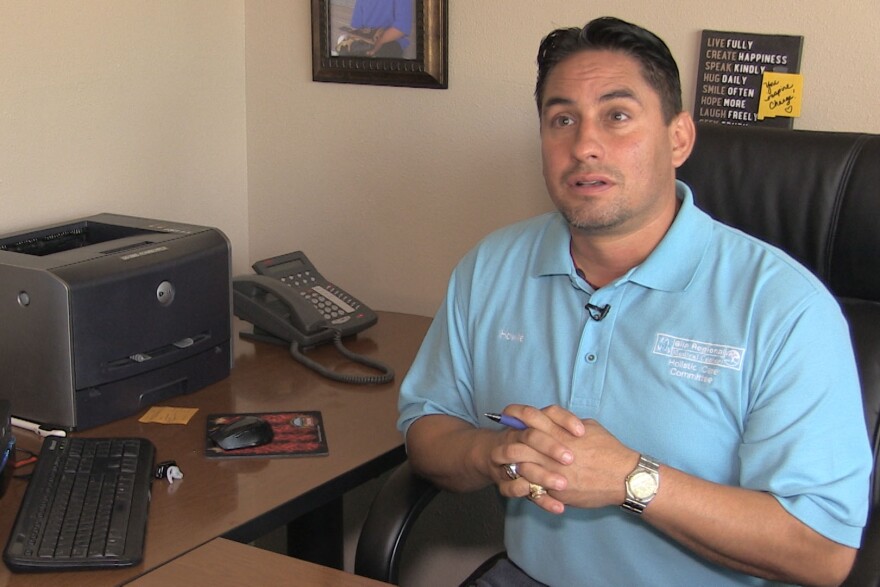New Mexico public school teachers recently received their evaluations and schools received A through F grades. Many are not satisfied with the results and are not clear about how the assessments are calculated some educators say the system does not provide the information needed to make improvements.
New Mexico State Senator Howie Morales taught special education and has a doctorate in education. He’s concerned about how the Public Education Department evaluates schools and teachers. He notes the amount of funding a school receives is linked to the A through F school grade. As well as a teacher’s promotion or firing may be based in part on their evaluation.
Morales says the school ratings and teacher evaluations are not always accurate.
“You have truly highly effective educators who are coming out as minimally effective or you have schools that are higher proficiency that may have a D or an F. But you have schools that have less proficiency that have are actually an A or B." he says.
http://www.youtube.com/watch?v=Arelj_-_cII&feature=youtu.be
Morales says the volatility in school grades and teacher evaluations is due to the Public Education Department’s emphasis on standardized testing.
“To have it at 35%, to 50%, that is much to high. There is too much that is going on in that classroom that is not being effectively measured when you are putting so much emphasis on standardized tests.” he says.
According to the research group the RAND Corporation, the so called value added model being used by New Mexico is not an absolute indicator of effectiveness. RAND says the model should be used in conjunction with other measures like teacher peer reviews, school environment and student in class work.
But New Mexico Public Education Department Secretary designate Hanna Skandera says the state’s teacher evaluation systems had to be changed, the old system didn’t reveal where development and improvements were needed. Skandera says the old system rated 99.9% of teachers effective.
“We first have to ask what did we have before, it was subjective and didn’t tell us any information on how to become better educators and how to better serve our kids” she says.
But Morales says the new system just gives schools a letter grade and teachers a rating and schools and teachers don’t get to see test results so they can address gaps in the curriculum, address areas of student weakness and approach different teaching methods.
“It still can’t give any pathway to showing improvement or how that educator can take those numbers and really improve their performance” he says.
But even if the system provided more information, Morales says he isn’t sure if the feedback would be useful or even reliable. He has studied use of the value added model in New Mexico and in other states he says the level of volatility and inconsistency of scores is bigger than the over emphasis on standardized test scores.
So Morales took the scores and the model to a group of mathematicians and scientists in Los Alamos for analysis.
“I went to experts people who understand numbers, people who understand statistical models and asked them if this could be replicated, could we reproduce it, can every school go through and figure out how that was developed? The answer back then was no.” he says.
Morales says while the Public Education Department is leading a campaign to make teachers, schools and administrators more accountable for student achievement they are refusing to be transparent and accountable as a department.
“Not having all that data to see how they can determine how those grades were done for how that evaluation was calculated really leads its self to a lot of skepticism, saying that is this being manipulated. Is there a way you can tinker with the value added model that can produce certain results for certain agendas?” he says.
Morales says by gaming the formula, adding in new variables as they see fit the Public Education Department can generate the results and statistics to show how well the administration is doing, justify the need for certain policies and keep schools and administrators in check.
“It is basically rewarding those schools that are going to play along with those games.” he says.
Morales says he confronted Hanna Skandera about the addition of new variables in school grading measurements last year, he says it was done to generate grading and results that would provide a statistical backing for social promotion policies of that year.
“She admitted to doing so without telling the school districts by adding a 10th grade component in the variable within the formula. There were no changes to the formula at the elementary level which have shown that you have more D’s and F’s which really lends itself to the agenda and to the argument that we need social promotion.” he says.
Morales says he is proposing a moratorium on the use of value added models until they can be distinguished as the best way to evaluate schools and teachers and their use in New Mexico has become more transparent.



